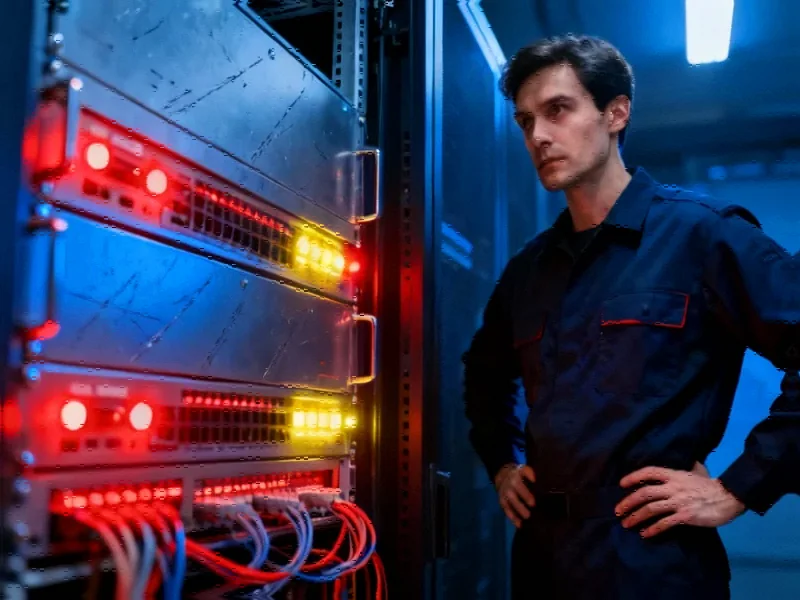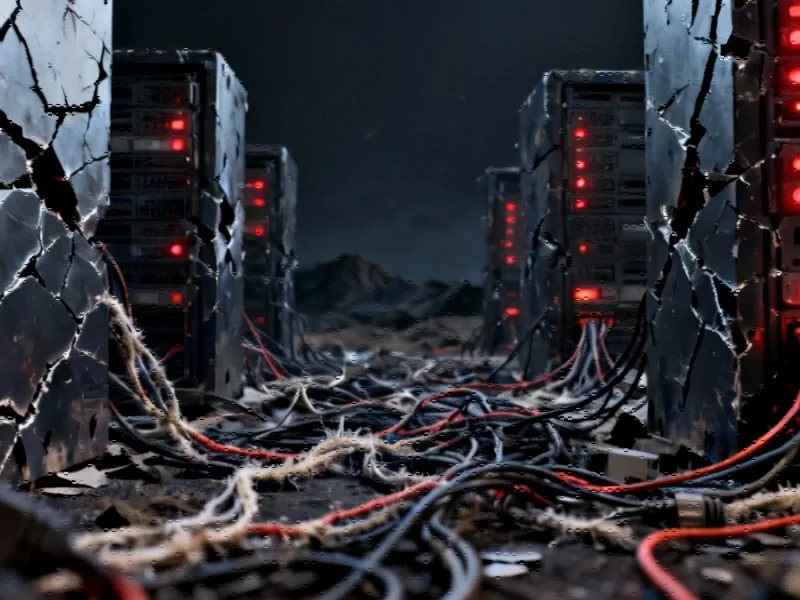The Fragile Foundations of Our Digital Ecosystem
Monday’s AWS outage served as a stark reminder of how dependent the modern digital economy has become on a handful of cloud providers. The disruption, which began in overnight hours Eastern Time and resurfaced later in the day, impacted everything from airline operations to food delivery services, demonstrating the remarkable concentration of risk in today’s internet infrastructure.
Understanding the Technical Breakdown
The core issue centered around DNS connectivity problems in AWS’s US-EAST-1 Region, which prevented services from accessing Amazon’s DynamoDB databases. As Mike Chapple, an IT professor at University of Notre Dame, explained to CNN: “Amazon had the data safely stored, but nobody else could find it for several hours, leaving apps temporarily separated from their data. It’s as if large portions of the internet suffered temporary amnesia.”
While Amazon initially reported resolution around 6:35 a.m. ET, stating that “the underlying DNS issue has been fully mitigated,” the company later acknowledged renewed network connectivity issues approaching midday. This pattern suggests that restoring full stability across such a complex ecosystem presents significant challenges, even after primary technical faults are addressed.
Widespread Impact Across Industries
The outage’s ripple effects were extraordinary in their breadth, affecting:
- Transportation: United Airlines systems disrupted
- Telecommunications: AT&T and Verizon services impacted
- Entertainment: Disney+, HBO Max, and Fortnite inaccessible
- Financial Services: Venmo transactions halted
- Retail: McDonald’s and Amazon’s own services including Prime and Alexa affected
This incident follows other major infrastructure disruptions that have highlighted systemic vulnerabilities in our digital backbone.
Security Context and Broader Implications
Rafe Pilling, director of threat intelligence at Sophos, confirmed to The Guardian that the incident didn’t appear to be a cyberattack, aligning with Amazon’s official statements. However, such events naturally raise concerns about potential cyber operations targeting critical infrastructure and the need for robust defensive measures.
The concentration of cloud power among a few providers creates what digital rights advocates call a free speech and accessibility crisis. Dr. Corinne Cath-Speth of Article 19 emphasized: “The infrastructure underpinning democratic discourse, independent journalism, and secure communications cannot be dependent on a handful of companies.”
Investment in Resilient Infrastructure
As organizations reconsider their cloud strategies, we’re seeing increased strategic investment in next-generation infrastructure that promises greater resilience. Meanwhile, entertainment and technology sectors continue to push forward with ambitious projects, as evidenced by the significant backing for major entertainment productions and high-performance computing supporting major esports events.
Political and Regulatory Response
The outage occurs amid growing political attention to technology infrastructure, with world leaders increasingly engaging with technology policy forums. As these major service disruptions become more frequent and impactful, regulatory scrutiny of cloud concentration is likely to intensify.
Moving Toward a More Resilient Future
The AWS outage underscores the urgent need for diversification in cloud computing and more robust failover mechanisms. As organizations assess their technology dependencies, many are exploring hybrid approaches and multi-cloud strategies to mitigate single-point-of-failure risks.
While the immediate technical issues have been resolved, the broader conversation about infrastructure concentration and digital resilience will continue to shape technology strategy and policy in the coming years. The incident serves as a crucial learning opportunity for organizations to reassess their dependency on single providers and build more resilient digital ecosystems capable of weathering such disruptions.
This article aggregates information from publicly available sources. All trademarks and copyrights belong to their respective owners.
Note: Featured image is for illustrative purposes only and does not represent any specific product, service, or entity mentioned in this article.



